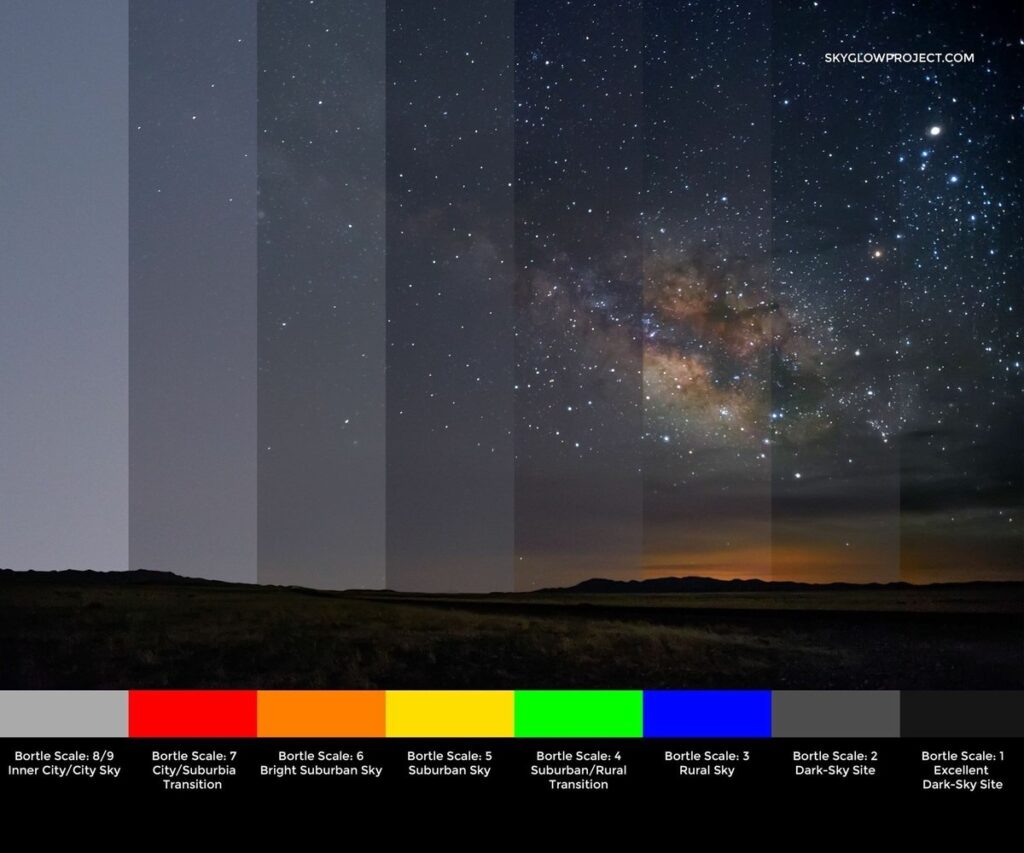The TESS-W photometer is a scientific device designed to measure continuously from a fixed location for monitoring the evolution of the night sky brightness along numerous continuous nights. The calibration is performed at Laboratorio de Instrumentación Científica Avanzada at Universidad Complutense de Madrid (LICA-UCM).
TESS photometer measurements
|
Work in progress... |
What does this graph mean?
The photometer measures how much light strikes the sensor. The meter then converts that amount of light into units of magnitudes per square arc-second. The larger the number, the darker the sky. A reading of 21.00 would indicate a very dark site, while a reading of 16.00 would indicate a very light polluted sky.
The “current mag” (upper right number in the table, and represented by the green line) is the live output of the Sky Quality Meter.
|
Class |
Title |
Approx. SQM mag/arcsec2 |
|
1 |
Excellent dark-sky site |
21.7–22.0 |
|
2 |
Typical truly dark site |
21.5–21.7 |
|
3 |
Rural sky |
21.3–21.5 |
|
4 |
Rural/suburban transition |
20.4–21.3 |
|
5 |
Suburban sky |
19.1–20.4 |
|
6 |
Bright suburban sky |
18.0–19.1 |
|
7 |
Suburban/urban transition |
|
|
8 |
City sky |
<18.0 |
|
9 |
Inner-city sky |
Light pollution (the introduction by humans, directly or indirectly, of artificial light into the environment) is a major issue worldwide.One of the effects of the light pollution is the brightening of the night sky. The increase.of the nocturnal sky glow prevents citizens from observing a dark starry sky.Although the light sources are located mainly in urban areas it is necessary to travel far from these places to find a sky with unpolluted, natural sky.




